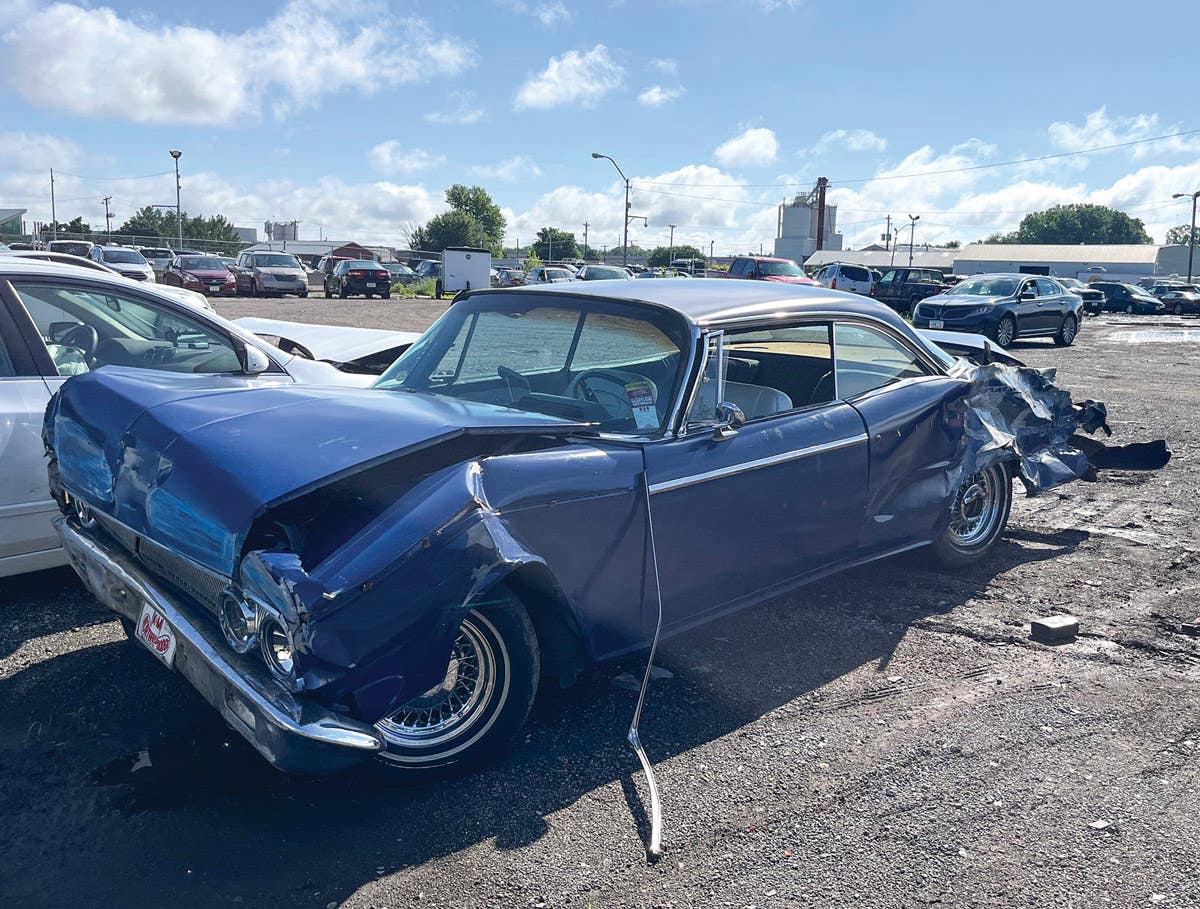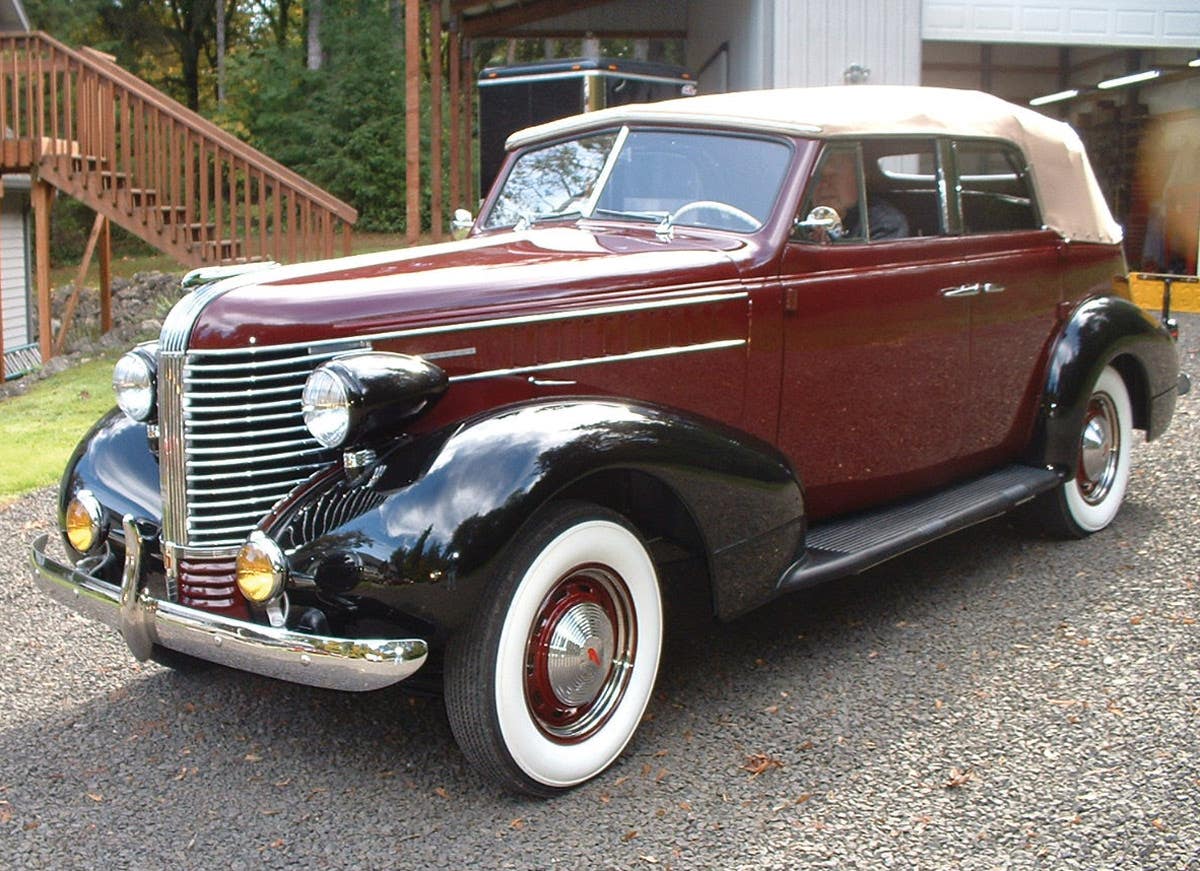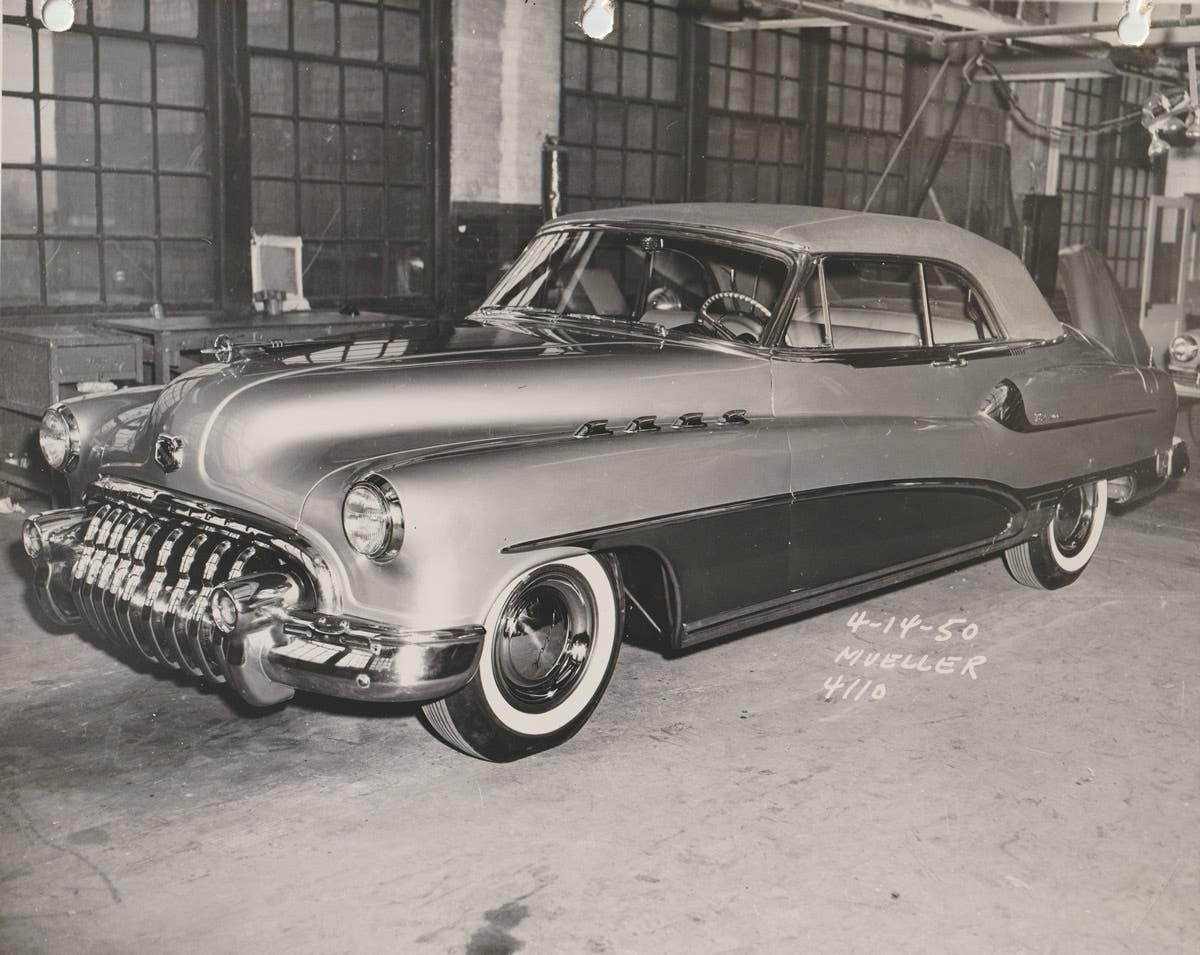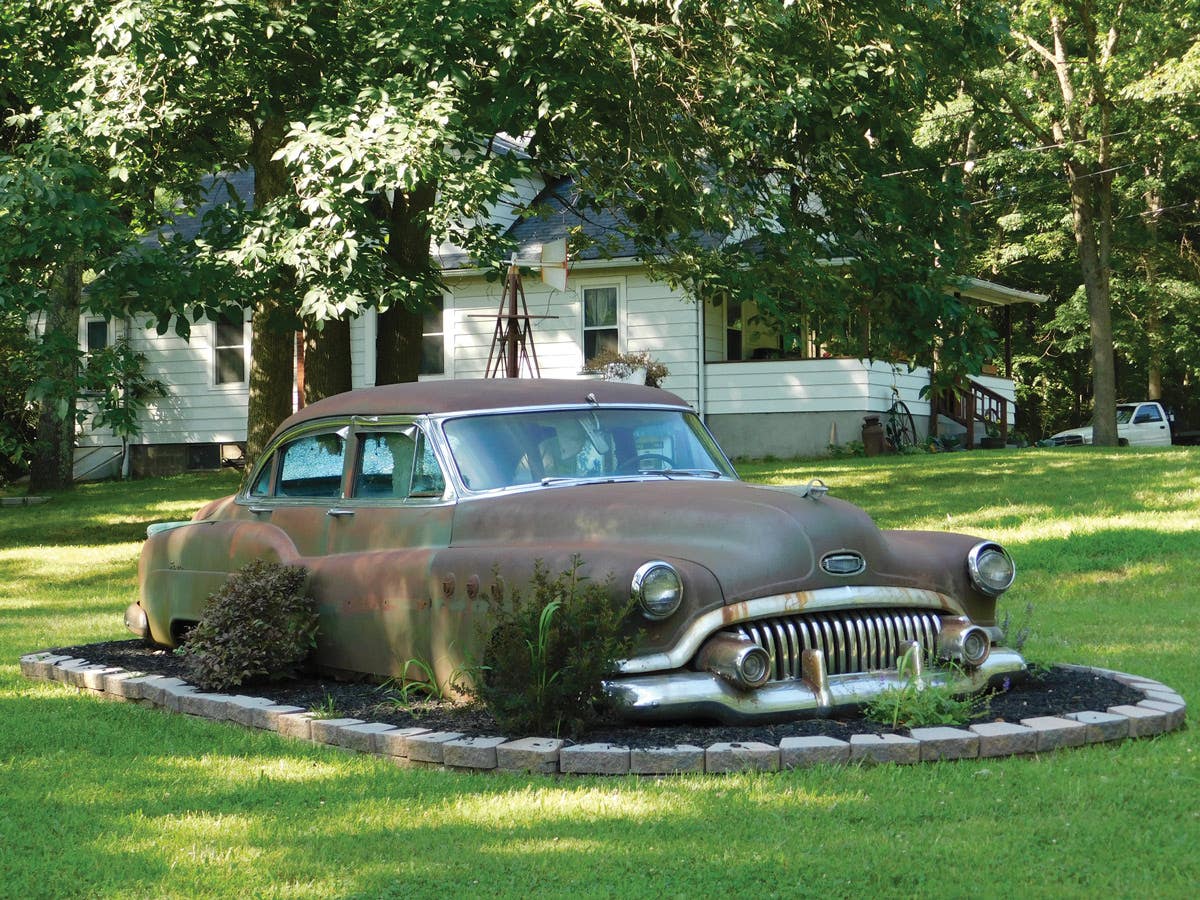The Cure for Corvette fever
Perhaps it’s the loss of their 1961 Corvette that led the Rehfeldts to buy their second Corvette, a 1964 Sting Ray, from the showroom floor, then never let it go.
The mudflaps have helped keep the original paint on this
Corvette in immaculate shape, particularly behind the wheel
openings in the body. This car is one of 8,304 Corvette coupes
built in 1964 (13,925 convertibles were also built that year).
The Silver Blue color of this Corvette was somewhat popular;
3,121 were painted the color.
Henry and Naomi Rehfeldt are no strangers to great cars. Since the 1950s, the couple have built and owned hot Ford hot rods, cool Chevy customs and several sweet stockers. Those cars have since been sold to make room for others, but it’s the 1961 Chevrolet Corvette that Henry Rehfeldt misses the most.
“That’s the one I should have kept,” Rehfeldt said. “They didn’t make many of those dual-quad [cars].”
Perhaps it’s the loss of that 1961 Corvette that led the Rehfeldts to buy their second Corvette, a 1964 Sting Ray, from the showroom floor, then never let it go.
Henry and Naomi Rehfeldt bought this 1964 Corvette Sting Ray
new in June 1964. The car was, literally, a neck-turner, and
thanks to their appreciation for the car, it remains thoroughly
original, as pictured in this 1964 photo.
(Henry and Naomi Rehfeldt photo)
“We bought the car on June 24, 1964, from Bob Miller Chevrolet-Oldsmobile in Princeton, Wisconsin, while en route to Wisconsin Dells,” he said. “As we drove through Princeton in our black 1964 Chevrolet Impala SS, we saw the Corvette parked in front of the dealership. We went down the road a mile or two when I looked at my wife; she looked at me, and with that look in her eyes, we made a U-turn and went back to look at the car.”
The Silver Blue color of the Corvette Sport Coupe may have caught the couple’s eyes, but it was the car’s options that clinched the deal. The St. Louis-built Corvette was was equipped with a four-speed transmission ($188.30), the 300-hp 327-cid V-8 ($53.80), Positraction rear axle ($43.05), 6.70 x 15 four-ply white sidewall tires ($31.85) and a push-button AM/FM radio ($176.40). On top of the Corvette’s $4,252 base price, the options added approximately $500 for a total of $4,804.50, after the $59 destination charge.
It didn’t take long for a deal to be struck for the Sting Ray, and when the Rehfeldts returned to their Impala to continue their vacation, the owner of the dealership told them to finish the trip in their new Corvette. “I don’t know if we just looked trustworthy or if the 1964 Impala we left with him did the trick!” Rehfeldt said.
Since the black Impala SS was a trade-in, the Corvette was the Rehfeldt’s only mode of transportation for a period. Naomi used the car for her daily commute to work, but made sure to park it away from other cars to avoid dings and dents in the sharp creases of the Corvette’s fiberglass body. To keep the car out of rough Wisconsin winters, the Rehfeldts eventually purchased a second vehicle.
1964 was the second year in a Corvette styling cycle that began in 1963 — a year which marked the first time in Corvette history that a fixed-head coupe was added alongside an open-top model in the Corvette line. For the first Corvette Sport Coupe, Bill Mitchell’s design team integrated a split rear window in the fastback, which allowed the ridge started in the roof to extend down the rear of the car.
This “spine” was just one design feature that mimicked the stealthy sea creature for which the car was named. In emulating the stingray, the General Motors design team blended round curves with sharp creases in all the right places to make the new Corvette harmonize with the road and strike a chord with driving enthusiasts.
Only one year later, the split was removed from the rear window and the backlight was made as a one-piece unit. Even though most collectors today seek the 1963 “split windows,” many new Corvette buyers were glad to see the one-piece rear window; some 1963 owners even removed the section of body that split the rear window into two pieces to install 1964-and-later rear windows. Because of today’s preference for 1963 Sting Ray, Rehfeldt has noticed very little attention is given to 1964-and-later models.
“’64s are in the shadow of ’63 Corvettes,” he said. “You don’t see or hear about too many ’64s.”
The Rehfeldt’s 1964 Corvette sports only 42,000 miles, many of which came on the drive from the couple’s central Wisconsin home to Chicago and the Twin Cities, as well as two trips to Florida — all in the first 10 years.
Rehfeldt said he didn’t expect to own the car this long but, perhaps subconsciously, they began planning for long-term ownership many years ago. Rehfeldt purchased a new exhaust system (still wearing the price tags) and tail lamps from the dealership and has since replaced the mufflers, but he never had a need to install the replacement tail lamps. In fact, the car remains in largely original condition, down to the paint, interior and mechanical components, including the all-important, numbers-matching engine, transmission and rear end.
“People are impressed by the car’s originality, especially the carpet,” Rehfeldt said. Among the impressed are appraisers, at least one of whom has commented that the paint is the nicest he had seen. Rehfeldt is also quick to point out the seams that hold the Corvette’s fiberglass panels are visible through the 45-year-old metallic paint.
The car remains very original, but Rehfeldt did install aluminum Corvette valve covers shortly after buying it new.
“I thought, ‘Why would GM put those tin valve covers on a car with all of those other aluminum parts?’” he said. But the Corvette purist need not to worry — Rehfeldt has the still-mint orange originals hanging from his garage wall, complete with runs in the paint as applied from the factory.
These days, the Rehfeldts’ Corvette is driven only to shows. Its daily-driver days are far behind it, and the Rehfeldts don’t seem anxious to make the same Corvette mistake again.
CLICK HERE to tell us what you think int he Old Cars Weekly forums
Angelo Van Bogart is the editor of Old Cars magazine and wrote the column "Hot Wheels Hunting" for Toy Cars & Models magazine for several years. He has authored several books including "Hot Wheels 40 Years," "Hot Wheels Classics: The Redline Era" and "Cadillac: 100 Years of Innovation." His 2023 book "Inside the Duesenberg SSJ" is his latest. He can be reached at avanbogart@aimmedia.com







